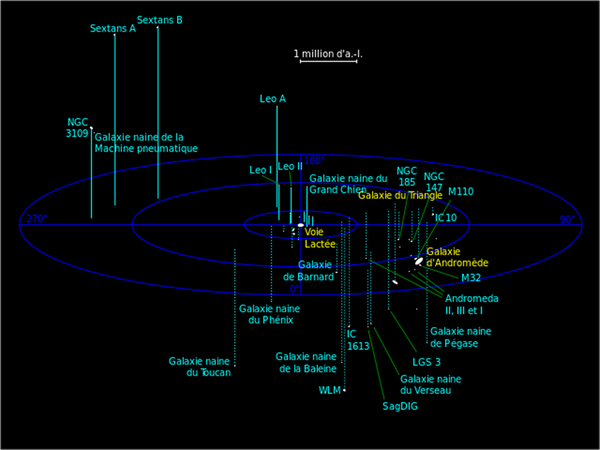
Description of the image: Our Galaxy Clusters.
Galaxy clusters are the largest structures in the universe, held together by gravity. They gather into superclusters, and our own Milky Way is part of the Local Group, which contains dozens of galaxies. Furthermore, the Local Group is part of the Virgo Supercluster, which contains over 100,000 galaxies and spans nearly 110 million light-years.
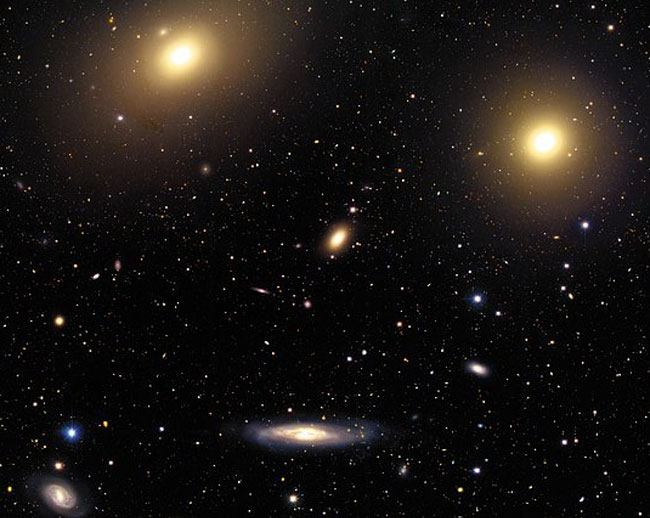
The Virgo Cluster is a large galaxy cluster located at a distance of 15 to 22 Mpc (∼48.9 to 71.8 million light-years). It was discovered by Charles Messier in 1781, who mapped many of its most important galaxies, including the giant elliptical galaxy M87. This cluster is at the center of the Virgo Supercluster, which includes the Local Group and is home to the giant elliptical galaxy M87. It is approximately 8 degrees in angular diameter and contains between 1,300 and 2,000 galaxies, many of which are visible with a small telescope. The exact distance to the cluster is poorly known; the best current estimates, based on observations using the Hubble Space Telescope, give an average distance of about 20 Mpc (65 million light-years). The cluster is an irregular cluster of at least three subclusters centered on the galaxies M87, M86, and M49. The most massive is the one centered on M87, with a mass of approximately 10^14 solar masses.

The Coma Cluster (also known as Abell 1656) is a vast cluster of galaxies located about 99 million light-years away. It is one of the densest clusters known, containing over 1,000 identified galaxies. The cluster's ten brightest galaxies have apparent magnitudes between 12 and 14 and are observable with a medium-sized amateur telescope. The central region of the cluster is dominated by two giant elliptical galaxies: NGC 4874 and NGC 4889.
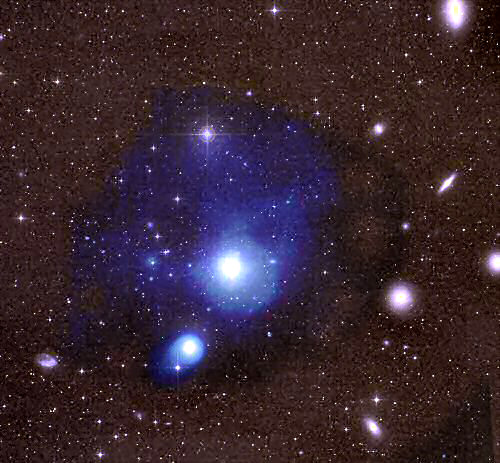
The Fornax Cluster is a relatively nearby cluster of galaxies, located approximately 65 million light-years away. It is the second-largest cluster within 100 million light-years of our Milky Way, after the Virgo Cluster. The Fornax Cluster contains over 600 galaxies, with the dominant galaxies being the elliptical galaxies NGC 1399 and NGC 1404. These galaxies contain some of the oldest stars known, dating back nearly to the Big Bang. The cluster is notable for its high density of galaxies and the intense gravitational interactions between them.
The Shapley Supercluster (also known as SCl 124) is a supercluster of galaxies located in the constellation of Centaurus. It is approximately 650 million light-years away (redshift z = 0.046). Discovered by Harlow Shapley in 1936, it consists of approximately 7,600 galaxies, with the brightest ones reaching the 18th apparent magnitude. This supercluster is notable for its large linear extent, its rich population, and its distinctive elongated shape. Today, it is considered the core or nucleus of the Shapley Supercluster. In 1989, Somak Raychaudhury of the University of Cambridge mapped this supercluster using the UK Schmidt Telescope and the Automated Plate Measuring (APM) system. The Shapley Supercluster is also associated with the Great Attractor, a massive concentration located in the same direction as the supercluster, towards Centaurus.

The Hydra Cluster (Abell 1060) is a cluster of galaxies located in the constellation of Hydra. It contains 157 bright galaxies and spans a width of 10 million light-years. Despite its apparent richness, it is relatively sparse compared to other clusters like Virgo and Coma. The Hydra Cluster is notable for its two dominant elliptical galaxies, NGC 3311 and NGC 3309, which exhibit signs of recent star formation activity.
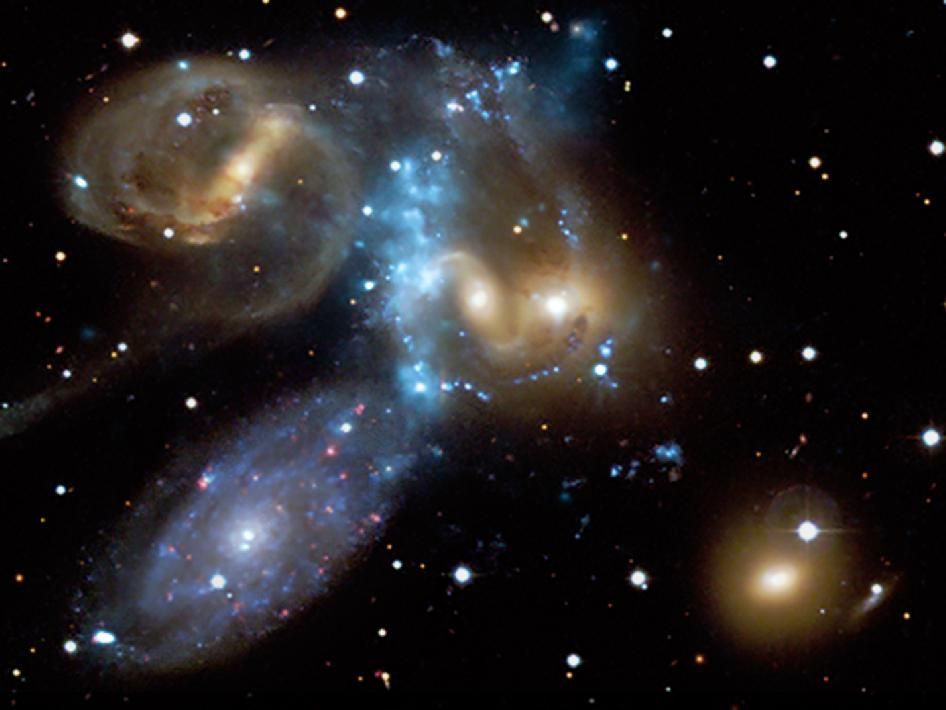
Stephan's Quintet is a compact group of galaxies located in the constellation of Pegasus. It was discovered by Édouard Stephan in 1877. Several of its galaxies show signs of violent interactions, with tidal tails of stars and gas stretching far from their cores. The Quintet is a prototype of a class of objects known as compact galaxy groups and has been studied extensively for decades.
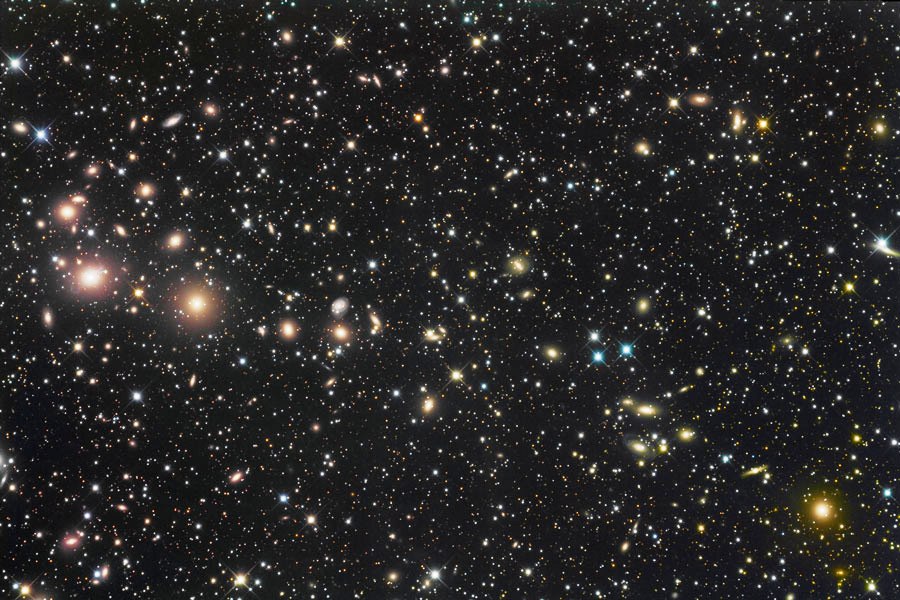
The Persée Cluster (Abell 426) is a cluster of galaxies located in the constellation of Persée. Its recessional velocity relative to the cosmic microwave background is 4,995 ± 60 km/s, corresponding to a distance of 73.7 ± 5.3 Mpc (∼240 million light-years). It is part of the Persée-Pisces Supercluster. The cluster contains approximately 190 galaxies, making it one of the most populous clusters in the X-ray sky. The X-ray emission from the cluster is due to the thermal emission from the hot gas (plasma) in the cluster, which is concentrated at its center.